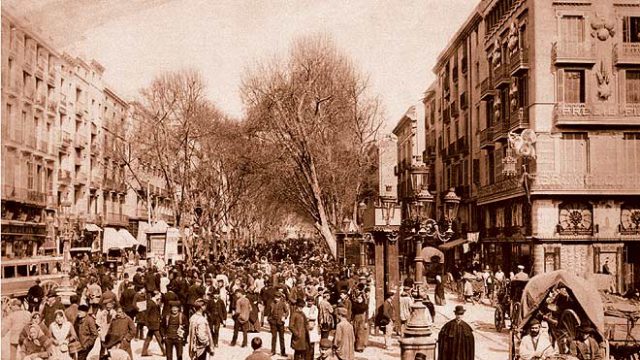The grand street of Barcelona, as beloved of tourists as the Sagrada Família, has a very interesting history. It was once a river, but by the 14th century it had become a sewage-strewn stream, draining the steadily expanding city. By the middle of the next century it had become a part of Barcelona, and the stream was slowly transformed into a bustling street, running the full length of the city.
Las Ramblas (the locals call it La Rambla) is famed as a lush, tree-lined avenue stretching from the Plaça de Catalunya to the Christopher Columbus Monument, but as this photograph from around the turn of the 20th century shows, the trees were still rather thin on foliage. However, it was even then the hub of the city with the historic Barri Gòtic or the Gothic Quarter to the right and the El Raval neighbourhood to the left. It certainly was less glamourous, though equally vibrant. Today it’s known for a great place to shop, as well as the perfect site for long coffee breaks at its sidewalk cafés, and the scene was pretty much the same a hundred years ago.
But as you can see from the photograph, the one big difference between then and now is that today, vehicular traffic on this long avenue is completely banned. That horse-drawn cart on the right would have been politely asked to leave.




